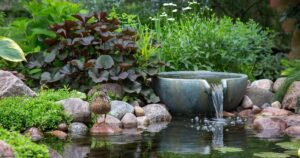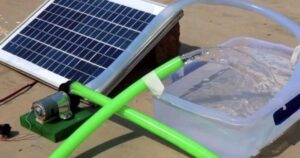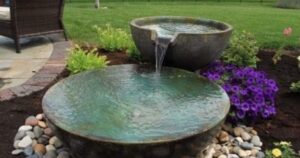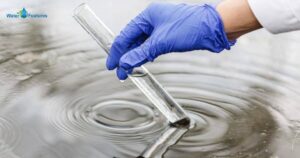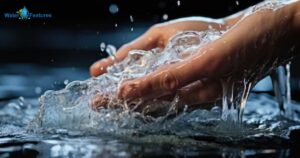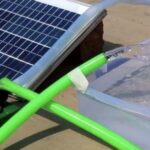Hermit crabs are known for their quirky behavior, from switching shells as they grow to their preference for a cozy hiding spot. While they can adapt to a variety of conditions, the water they drink is a critical aspect of their care. Tap water can contain chlorine, chloramine, heavy metals, and other elements that may not be suitable for these sensitive creatures.
Hermit crabs, those charming and curious little crustaceans, are not just captivating pets but also come with their own set of care requirements. One common question that hermit crab owners often ponder is, Can hermit crabs drink tap water? Providing the right type of water is essential for their well-being, and this article will delve into the intricacies of this query.
Imagine you’re an enthusiastic hermit crab owner, eager to ensure the best possible care for your unique pets. You’ve just brought your hermit crabs home, and as you prepare their habitat, you can’t help but wonder about the suitability of the tap water for their hydration. In the following sections, we will discuss the advantages and drawbacks of tap water and alternative water sources for hermit crabs, ensuring you can provide them with the best possible care.
Tap Water Composition and Hermit Crabs
The composition of tap water can pose potential risks to hermit crabs. Chlorine and chloramine, commonly used to treat tap water, can damage hermit crabs’ delicate gills, hindering their ability to extract oxygen from the water. Hamsters drink tap water? The presence of heavy metals in tap water can be toxic to these crustaceans, making it essential to consider alternative water sources to ensure their well-being.
Heavy Metals: Tap water may contain heavy metals like copper and lead, which are toxic to hermit crabs. These metals can leach into the water from pipes and plumbing fixtures.
Fluctuating Water Quality: The quality of tap water can vary from one location to another. Hermit crabs are sensitive to changes in water conditions, and inconsistent quality can stress them.
Hardness and pH: Tap water can have varying levels of water hardness and pH, which might not match the ideal conditions for hermit crabs.
Can Hermit Crabs Drink Bottled Water?
Many hermit crab owners opt for bottled water as an alternative to tap water. Bottled water can indeed be a safer choice, but there are a few things to keep in mind. Bottled spring water is a suitable choice because it typically lacks the chlorine and chloramine found in tap water, ensuring the well-being of your crustacean companions. It offers a convenient and consistent source of water, making it a popular option among hermit crab owners.
| Water Source | Advantages | Considerations |
| Dechlorinated Tap Water | Cost-effective with proper treatment | Regular testing needed |
| Bottled Spring Water | No chlorine or chloramine, convenient | Potential cost over time |
| Marine Saltwater | Provides essential minerals | Requires specific salinity |
| Distilled Water | Suitable for misting humidity | Not ideal as the primary water source |
Is Bottled Drinking Water Safe For Hermit Crabs?
Bottled drinking water can be a safer option for hermit crabs compared to tap water. It typically lacks chlorine, chloramine, and harmful contaminants found in tap water. Its consistent quality and convenience make it a reliable choice for hermit crab owners.it’s essential to check for any additional minerals or additives in the bottled water that might affect the habitat’s pH or water hardness, ensuring it aligns with the hermit crabs’ specific needs.
Lack of Additives: One advantage of bottled water is that it typically lacks the chlorine or chloramine found in tap water. It’s also free of heavy metals and other contaminants that can be harmful to hermit crabs.
Consistent Quality: Bottled water usually provides a more consistent quality compared to tap water, which can have regional variations.
Convenience: It’s easy to obtain and use bottled water, making it a convenient choice for hermit crab owners.
Cost: While bottled water is safe, it can become costly over time, especially if you have multiple hermit crabs or need to provide water for a large habitat.
What Kind Of Water Can Hermit Crabs Drink?
Hermit crabs require access to water sources that align with their specific needs. Ideally, they should have access to dechlorinated tap water, bottled spring water, and marine saltwater. Dechlorinated tap water can be a cost-effective option if treated with a suitable product.
Bottled spring water provides consistency and safety by lacking harmful additives, while marine salt water is vital for their health, offering essential minerals and nutrients. Providing these water sources ensures hermit crabs can stay hydrated and maintain their osmotic balance, promoting their overall well-being in captivity. To ensure the well-being of your hermit crabs, you have a few options for providing water:
Safe Water Sources for Hermit Crabs
Dechlorinated Tap Water: You can make tap water safe for hermit crabs by dechlorinating it. There are dechlorination products available at pet stores specifically designed for aquarium use. This method can be cost-effective but requires regular testing to ensure the water quality remains suitable.
Bottled Spring Water: As mentioned earlier, bottled spring water is a safe and convenient option for providing water to your hermit crabs. Be sure to check for any additional minerals in the water that could affect the pH or hardness of the habitat.
Marine Saltwater: Hermit crabs also require access to marine saltwater. This water source is crucial for their health, as it provides essential minerals and nutrients they need. Marine saltwater can be obtained as a premixed solution from pet stores.
Distilled Water: While not ideal as the sole source of water, distilled water can be used for occasional misting to maintain humidity in the habitat. It’s crucial to ensure hermit crabs have access to freshwater and saltwater for their hydration and osmoregulation needs.
Hermit Crab Water: How To Make It And What To Avoid
Creating the right water conditions for your hermit crabs is essential for their well-being. Here’s how to make and maintain their water sources.
Proper Water Care
Dechlorination: If you choose to use tap water, always dechlorinate it using a suitable product. This ensures that chlorine and chloramine, which can harm hermit crabs, are removed.
Monitoring Water Parameters: Regularly check the water’s temperature, salinity, pH, and hardness to ensure it aligns with the ideal conditions for hermit crabs. Maintain records to track any changes.
Freshwater and Saltwater Bowls: Provide separate containers for freshwater and marine saltwater. The saltwater should have a specific gravity.
Cleaning and Maintenance: Clean and replace water containers regularly to prevent the build-up of bacteria and contaminants. Always use clean, sterilized containers for their water.
Do Hermit Crabs Need Filtered Water?

Hermit crabs don’t require filtered water, but they do need clean and dechlorinated water. Filtration systems are not typically used for hermit crab habitats. Instead, providing fresh, dechlorinated tap water, bottled spring water, and marine saltwater in separate containers is the preferred method. Filtration systems can disrupt the necessary water parameters, potentially stressing or harming the hermit crabs.
When it comes to providing water for hermit crabs, filtration systems may not be the most suitable choice. Hermit crabs require access to clean, dechlorinated water, but using traditional filtration systems can disrupt the delicate balance of their environment. Filters may remove essential minerals and nutrients that are necessary for the crabs’ well-being.
How to Make a Hermit Crab Habitat
Creating a suitable habitat for hermit crabs is a fundamental aspect of their care. Your hermit crab’s home should mimic their natural environment as closely as possible to ensure their comfort and well-being. To achieve this, you’ll need to carefully design their habitat step by step.
A well-structured hermit crab habitat begins with selecting the right tank or aquarium. A 10-gallon tank is a good starting point for a few hermit crabs, but you may need a larger one if you plan to house more of these charming crustaceans.
Next, create a comfortable and stable environment by using a mix of sand and coconut coir as substrate, allowing your hermit crabs to dig and molt with ease. Monitoring temperature and humidity with a thermometer and hygrometer is essential, as hermit crabs thrive in temperatures and humidity levels.
Add a variety of tank decorations, such as driftwood, rocks, and shells for climbing, hiding, and molting, to keep your hermit crabs engaged. Providing a selection of shells for them to change into as they grow is vital, as hermit crabs rely on suitable shells for their protection and growth.
FAQ’S
Can hermit crabs drink tap water?
Hermit crabs can drink tap water if it is properly dechlorinated to remove harmful chemicals.it’s safer to provide them with dechlorinated water, bottled spring water, and marine saltwater for their hydration needs.
How often should I bathe my hermit crabs?
Hermit crabs should be bathed occasionally, approximately once a month. Avoid bathing them during the molting process, as it can be stressful.
Do hermit crabs need filtered water in their habitat?
Hermit crabs don’t require filtered water in their habitat. Instead, provide clean, dechlorinated tap water, bottled spring water, and marine saltwater.
What should I do if my hermit crab is not changing shells?
If your hermit crab is not changing shells, ensure that you have a variety of shell options available.
Conclusion
While tap water can be made suitable through dechlorination, opting for bottled spring water or marine saltwater simplifies the process and ensures consistent water quality. Creating and maintaining a proper habitat for your hermit crabs is equally crucial, providing them with a comfortable environment that caters to their unique needs. By following the guidelines outlined in this article, you can ensure your hermit crabs remain healthy and happy, and thrive in their unique, captivating world.
Remember that hermit crab care is a rewarding journey that involves ongoing attention and observation. Ensuring that hermit crabs have access to the right water sources, including the critical consideration of whether Can Hermit Crabs Drink Tap Water? a well-prepared habitat, and a varied diet will enable you to enjoy the delightful antics and personalities of these remarkable crustaceans for years to come.

